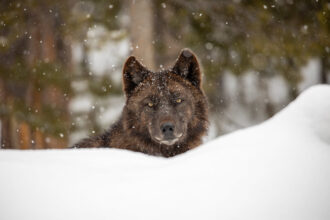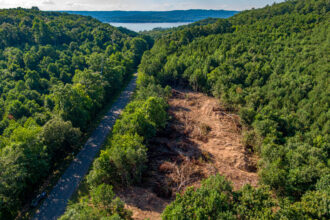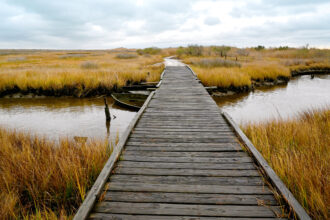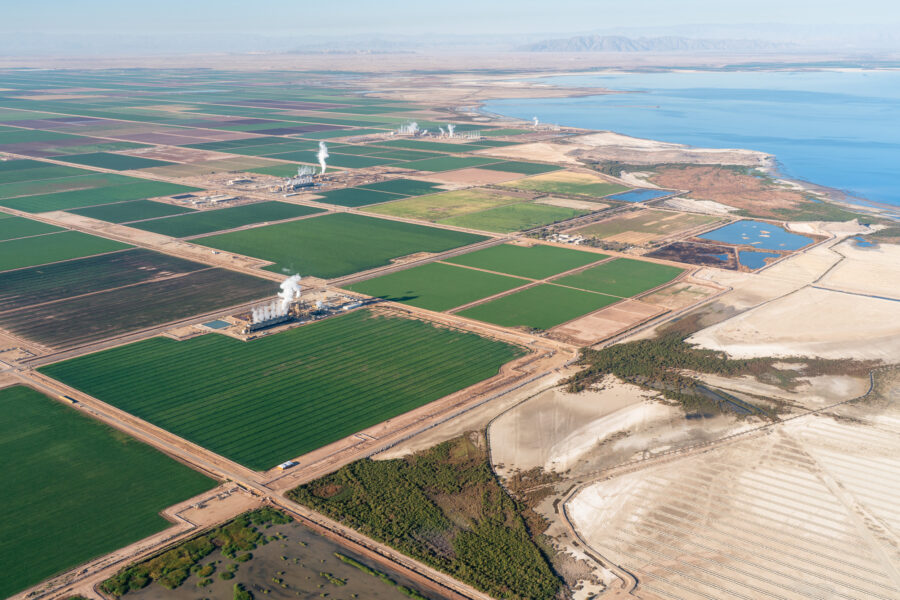Change the world slowly enough, and even scientists can turn into something like the proverbial frogs in a saucepan, unaware that they are gradually starting to boil.
A new study, published today in BioScience, revealed how scientists often fail to consider historical states of the world when conducting ecological research. Using gray wolves as a case study, the meta-analysis found that almost 60 percent of journal articles and graduate theses conducted on plant and animal communities affected by wolves, or their removal from an area, from 1955 to 2021 neglected to mention gray wolves or other large carnivores in any of their writing.
The authors of the new study found this to be a critical omission. Wolves were driven to extinction in the contiguous United States by the early 1900s, persecution which has resulted in a suite of sweeping changes observed in the ecosystems where these canids once roamed. Today, they survive and thrive under the auspices of the Endangered Species Act, though their persistence remains fraught with controversy and their population size and range are still well below their historical norm.
“There is this big and important signature that wolves have had on the landscape, and when we take them out … it’s a big deal,” said Robert Beschta, professor emeritus at Oregon State University and one of the study’s co-authors. “You lose the apex predator, and the native ungulate populations take over. They heavily impact plant communities and have all kinds of other effects.”
For instance, the loss of wolves from some ecosystems caused a spike in elk populations that subsequently overgrazed vegetation, dramatically changing the habitat. This process, known in ecology as a trophic cascade, is one reason wolves are thought to be such essential components of the food webs they are a part of. When researchers subsequently treat landscapes in which such predators have been removed by human activity as being in a natural state, without an adequate consideration of how things once were, they can easily be misled by the conclusions they draw.


This phenomenon of “shifting baselines” is a crucial concept for scientists studying a changing world. Coined by the marine biologist Daniel Pauly to describe slow but steady changes in the shrinking size of fish catches over the years, the term has been subsequently co-opted by ecologists to depict the many ways in which natural landscapes can change over time, leading to a re-adjustment of what is considered “natural” or “normal.”
“A few scientists had already raised concerns about the risks of failing to identify appropriate baseline conditions,” said Bill Ripple, an ecology professor at Oregon State University and one of the study’s lead authors. “However, as far as we know, our study is the first to consider this issue by analyzing a large number of publications from ecosystems where large predators historically had major impacts.”

The authors collated research spanning over half a century and 11 national parks across sites where wolves had been historically present but were driven to extinction locally. From as far east as the Badlands National Park in South Dakota and as far west as Redwood National Park in California, Ripple and his colleagues found that studies consistently failed to mention the canines or other apex predators that had been extirpated from the landscape.
“Scientists have been perhaps remiss in thinking about their study areas in national parks as being representative of nature,” said Rolf Peterson, a research professor at Michigan Technological University who spent his career studying the ecology of wolves and their prey. “I think the lesson is, don’t forget history. Realize that what we’re looking at now is affected by things that might have gone on centuries ago.”
The extirpation and reintroduction of wolves to the western United States has been a quagmire of controversy over the past century, driven by ranchers and hunters who see the animals as a threat to livestock and game on one hand, and fans of the charismatic predators on the other. There are also different schools of thought on the extent and time frame in which wolf reintroductions might be capable of reverting ecosystems back to their native states. “These systems can change so profoundly following predator extirpation,” said Daniel MacNulty, a professor at Utah State University who has conducted decades of research with the Yellowstone wolf population and who was not involved in this study. “Simply reintroducing predators will not lead to a restoration of that pre-existing state, assuming you even know what that state is to begin with.”
Other scientists see possibilities. “Can you ever recover an ecosystem back to what it once was?” Beschta asked. “The answer from a narrow standpoint is, no, we can’t. Something’s changed. But from a structural and functional standpoint, I would argue we can get pretty close to what we once had.”
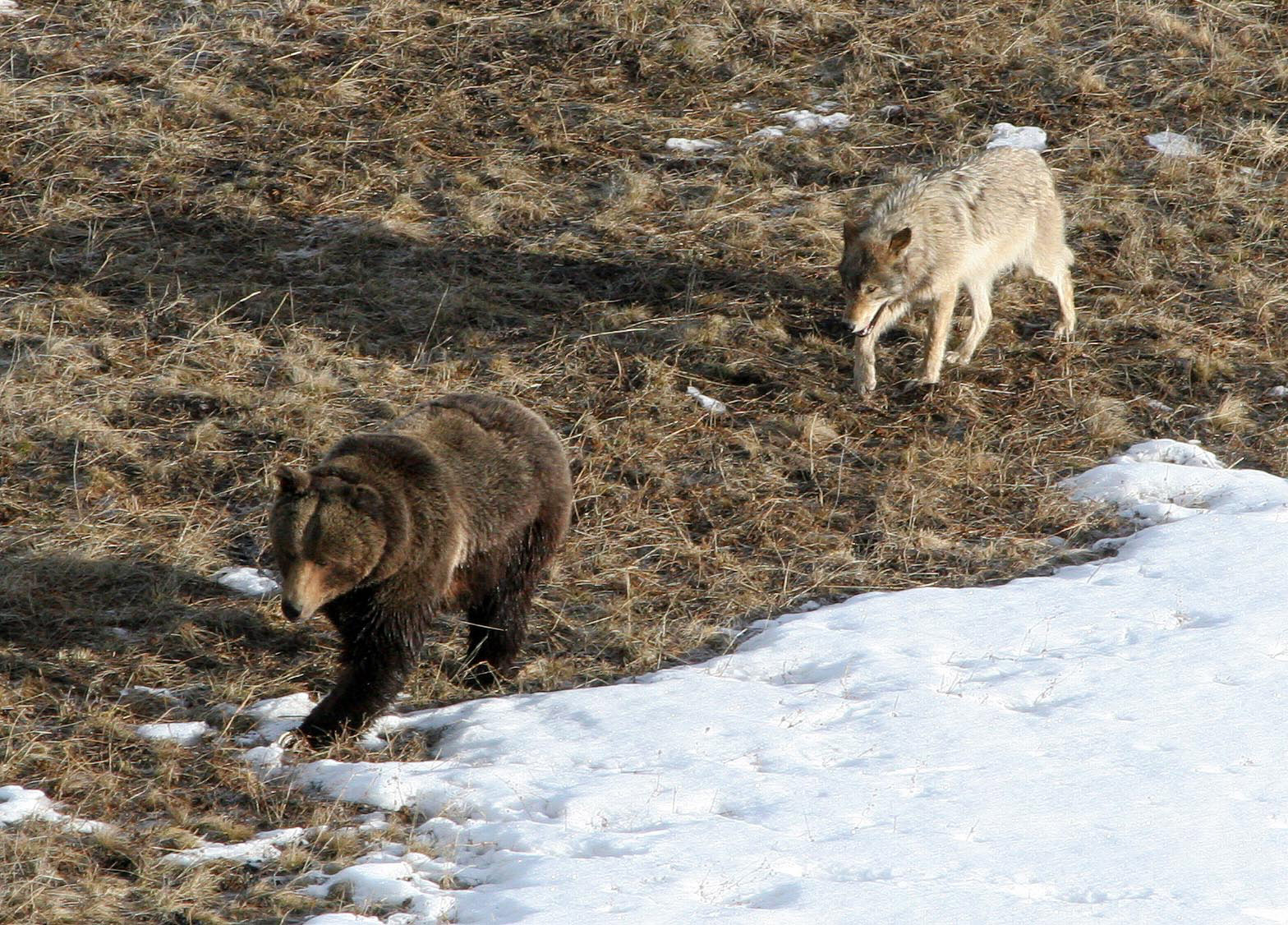
Where there is little doubt, however, is in the reverberating consequences the removal of wolves and other apex predators had on ecosystems, starting in the early 1900s. “Scientists generally agree that the decline in woody plant communities in many Western parks was primarily caused by the loss of wolves and other large predators,” said Ripple.
However, even a pre-1900 baseline can be biased.
“Is it a baseline if it’s [always] shifting?” asked MacNulty. “And that’s to say nothing of the fact that indigenous people were forcibly relocated or excluded from Yellowstone during the late 19th century,” which also added trophic cascades to the long and tumultuous history of Yellowstone National Park, one of the article’s study sites. “Humans are really the apex predator here and they certainly had important effects,” he said.
Shifted baselines can be difficult to detect, yet have significant consequences. “I think this is a really important paper, because sometimes science advances at a certain rate without a self-introspection,” said Amaroq Weiss, senior wolf advocate at the Center for Biological Diversity. “Nature is a really complex tapestry. It’s woven together by threads that hold it together and keep it strong. When you start to pull threads out like you remove apex predators, the whole thing begins to unravel.”
This story is funded by readers like you.
Our nonprofit newsroom provides award-winning climate coverage free of charge and advertising. We rely on donations from readers like you to keep going. Please donate now to support our work.
Donate NowThe removal of keystone species, animals that play an outsized role in their ecosystem’s functioning, often brings consequences that reverberate throughout a food web. According to Ripple and his co-authors, for example, the widespread decline of reef sharks might enable an overabundance of green sea turtles that then overgraze seagrass meadows. Such a trophic cascade might shift baselines in a way that could skew related marine research that does not include adequate historical context.
“The elimination of beaver is [another] perfect example,” added Peterson. “Continent wide, beaver were virtually extinct early in the 1800s.” Beavers are known ecosystem engineers, significantly modifying the habitats in which they live by slowing the flow of creeks and rivers, spreading water through the landscape, moderating the fire cycle and facilitating landscape-level species richness. Forgetting to incorporate huge changes in beaver populations into stories of the recovery or restoration of American landscapes likely constitutes another shifting baseline scientists and stakeholders could fail to properly account for.
“Beavers were marginalized well before wolves disappeared,” stressed Beschta. “They’re not as sexy as wolves, but they’re a big deal.”
About This Story
Perhaps you noticed: This story, like all the news we publish, is free to read. That’s because Inside Climate News is a 501c3 nonprofit organization. We do not charge a subscription fee, lock our news behind a paywall, or clutter our website with ads. We make our news on climate and the environment freely available to you and anyone who wants it.
That’s not all. We also share our news for free with scores of other media organizations around the country. Many of them can’t afford to do environmental journalism of their own. We’ve built bureaus from coast to coast to report local stories, collaborate with local newsrooms and co-publish articles so that this vital work is shared as widely as possible.
Two of us launched ICN in 2007. Six years later we earned a Pulitzer Prize for National Reporting, and now we run the oldest and largest dedicated climate newsroom in the nation. We tell the story in all its complexity. We hold polluters accountable. We expose environmental injustice. We debunk misinformation. We scrutinize solutions and inspire action.
Donations from readers like you fund every aspect of what we do. If you don’t already, will you support our ongoing work, our reporting on the biggest crisis facing our planet, and help us reach even more readers in more places?
Please take a moment to make a tax-deductible donation. Every one of them makes a difference.
Thank you,









